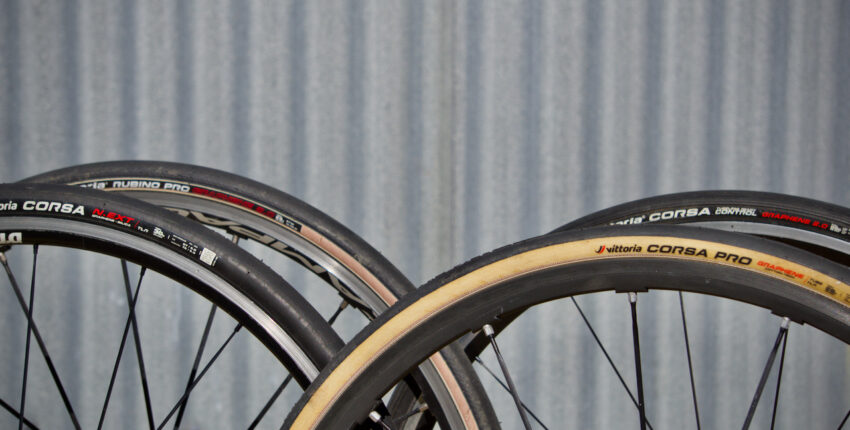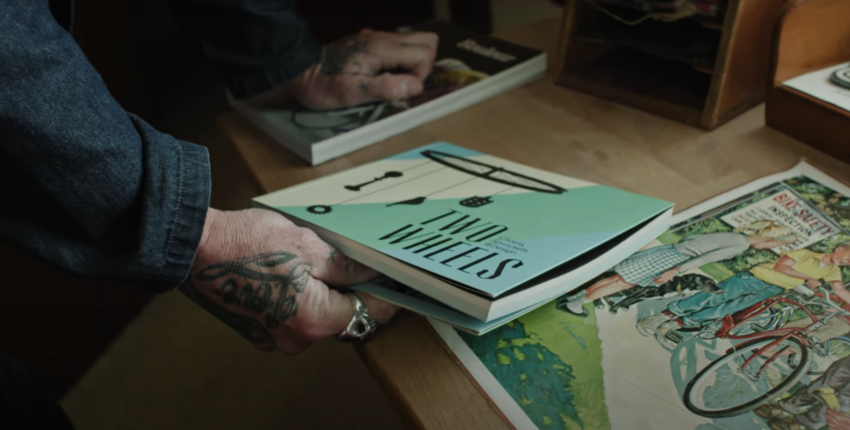Ridden: Specialized Sequoia Expert
When the Specialized Sequoia Expert arrived at Slap HQ, I wasn’t really harbouring any thoughts that it might be a bike that would replace riding two or three others. It’s not a road bike, it’s definitely not a mountain bike, but it’s both of those and more, admittedly in smaller portions of each of the bikes it takes its cues from. But in the few months that it sat among the quiver, it was usually the one that got chosen, and planning a ride wasn’t anywhere near a priority; just start pedalling and see where you end up.
As the Specialized Adventure Gear branding prominent on the bike attests to, it’s a machine made to take you anywhere, and not let you down while you’re miles from civilization and faced with a slog across a muddy field, or some rocky 4wd track, or even a bit of rooty singletrack between you and home (or away). It’s solid. The cromoly steel frame doesn’t pretend to be some thin-tubed race machine with a pedigree for sprints and KOMs, but does everything it can to reassure you that you’re sitting on the bicycle equivalent of a Panzer tank. Did I mention it’s solid?
That solidity really comes into play best when riding on gravel roads, feeling as if it is almost rolling on top of the surface but with a connectedness and smoothness that a good steel frame delivers. The carbon fork and carbon/elastomer seatpost probably help with killing road buzz, but those trusty straight ol’ ferrous tubes are renown for their prowess in that area and don’t disappoint here.
Having the option of a full set of Specialized’s own Burra Burra bags custom made for the bike is a bonus, with more than enough braze ons and bags to accommodate gear for the longest of trips. I never used the fork-mounted bags at all as most of my bigger trips were overnighters, but if more bottles of beer (or other essentials such as ‘water’) were needed they add a good deal of carrying capacity. I’m not sure how having more weight attached to the front wheel would affect the bike’s steering, but with the bar roll and a camera bag strapped to the bars it still tracked consistently and went where you wanted it to go despite a couple of kilos of ballast.
The half-frame bag got the most action on rides where minimal clothing was required, like on all-dayers when food and spares were the priority. The main compartment held a smaller pouch stuffed with every spare bolt, link, hanger, Co2 and tools that I could stuff in, and that sat at the back of the bag out of the way. Then there’d be a couple of large rolls or wraps for lunch, bags of nuts, fruit, a light jacket, pump, tube/s etc without bulging the sides at all. On the other side of the bag the two zippered sleeve pockets were perfect for slim things like gels, energy bars, card wallet, phone etc, stuff you want to get at quickly and not have to dig through all your other stuff to get to.
The Sawtooth tyres have a considerable footprint at 42mm wide, and handled everything they rolled over with surprising alacrity and an ability to hook up where a tread pattern that features no knobs has little right to do so. Finding just the right pressure for a range of conditions resulted in around 45-50psi, but for rides predominantly on the road they performed better at around 60. If you want to use this bike to jump into the Sunday road bunch, then be prepared to work a bit harder to keep the bike up to speed, and if you can’t then just duck off up the nearest unpaved side road where the Sequoia feels most at home.
A carbon fork with thin, flat blades offered a bit of shock absorption on the bumpy stuff, and the 12mm thru-axle kept the front end tracking stiff and straight. The Cruzero 22mm internal width box section rims may not be the fastest or lightest but took punishment like an outclassed MMA fighter and looked a whole lot better at the end of it.
The carbon FSA SL-K cranks run a 42t single ring, which pushed the limit on some climbs when the bike was fully loaded. If I had to do this day in day out over a month’s long trip, I think I’d be looking at the Elite model with its double chainring setup. If you’re not doing that then this is still a very usable 1x drivetrain.
What makes it usable is the 11-42 cassette, and a swap to a 46t would result in a lower gear for those super-steep or lengthy slogs uphill. The rear dropouts are super burly and with the 142×12 thru-axle you knew exactly where your rear wheel was and what it was hitting.
When you’re hauling a fully-loaded steel bike with smooth skinny tyres down a washed-out 4WD track at speed, you need some good brakes. The SRAM Force hydraulics never hinted at not being up to the job, with consistent power and feel even when subjected to drownings in creeks, mud and sand. The use of pie-plate behind the cassette is one of the rare examples where you shouldn’t throw it away, as it keeps mud out of the cassette and lube and crap from the chain and cassette away from the brakes.
I have to admit, I don’t really like SRAM’s Double Tap shifting. In fact I hated it at the start of this test. But once I’d trained my brain to tell my fingers how far to move the lever I didn’t hate it as much. The shape of the brake reservoir/hoods and levers is good though, and the flare of the Specialized bars puts the levers in a natural-feeling position that was comfortable over 6-8 rides/hikes, and also allowed access to the drops with a bar roll and/or camera bag hanging off them. At 44cm wide and with the flare they have more of a mountain bike feel than a road one, which makes sense for a bike of this nature.

I’ve always gotten on well with Specialized saddles, having ridden on them exclusively for a good number of years in the past. The Phenom is a shape I’m used to as it was my go-to MTB perch. This seemed to be a bit less padded than I remembered and the fabric cover may have lended to the feeling of firmness under ass, but it was still comfortable many hours in. I don’t know if the Cobble Gobbler seatpost helped or not, but I never finished a journey with beaten-up nether regions.

Side-loading bottle cages are a must when the frame bag is in use, and even then it can be a bit of a struggle to get a bottle out and back cleanly from the front cage. I finally worked out that predominantly using the rear one was the better tactic.

Gear cable housing and brake hose run under the downtube and are out of the way of any other functioning bits or bags.

Bit of a singletrack diversion? Why not, the Sequoia is well-mannered enough to handle some Grade 3 twistys.
The lower priced Elite model would be something I’d consider, using the same steel frame but hung with a FSA 48/32 compact crank and Shimano 105 hydraulic brakes, both of which I’ve ridden on other bikes and know to be reliable and solid performers. The double chainrings would give the bike a bit more usability for the long hauler, or jumping into the occasional cyclocross race or gravel event.
When the call came to give the Sequoia Expert back, I felt a twang of disappointment knowing I didn’t possess a bike like it to take me on adventures into the unknown. Road riding and mountain biking just didn’t seem to fill the void, I wanted to do both at the same time, albeit with some limitations that those specific-use bikes eschew. But doing a little bit of everything more than a bit well is what the Sequoia is all about, and that’s enough to make it the type of bike you’ll want to pull from the line-up when you just don’t know what or where you want to ride. And you’ll always end up somewhere good.












